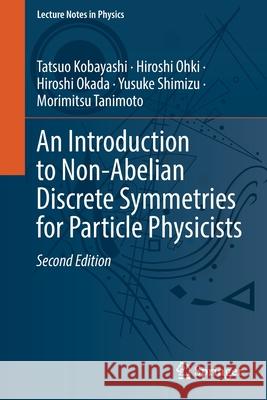An Introduction to Non-Abelian Discrete Symmetries for Particle Physicists » książka
topmenu
An Introduction to Non-Abelian Discrete Symmetries for Particle Physicists
ISBN-13: 9783662646786 / Angielski / Miękka / 2022 / 368 str.
Kategorie BISAC:
Wydawca:
Springer
Język:
Angielski
ISBN-13:
9783662646786
Rok wydania:
2022
Ilość stron:
368
Waga:
0.51 kg
Wymiary:
23.39 x 15.6 x 1.93
Oprawa:
Miękka
Wolumenów:
01
Dodatkowe informacje:
Wydanie ilustrowane











